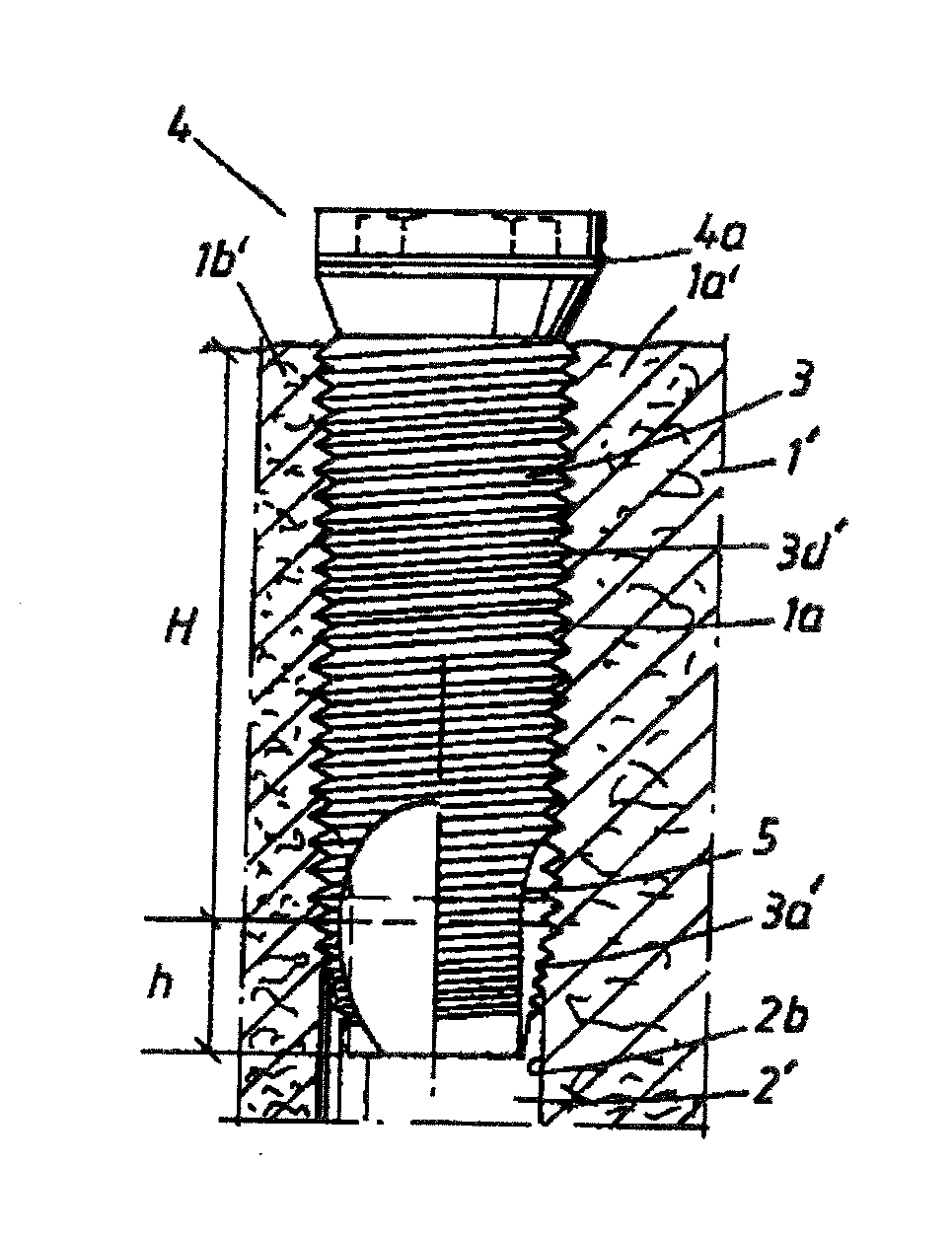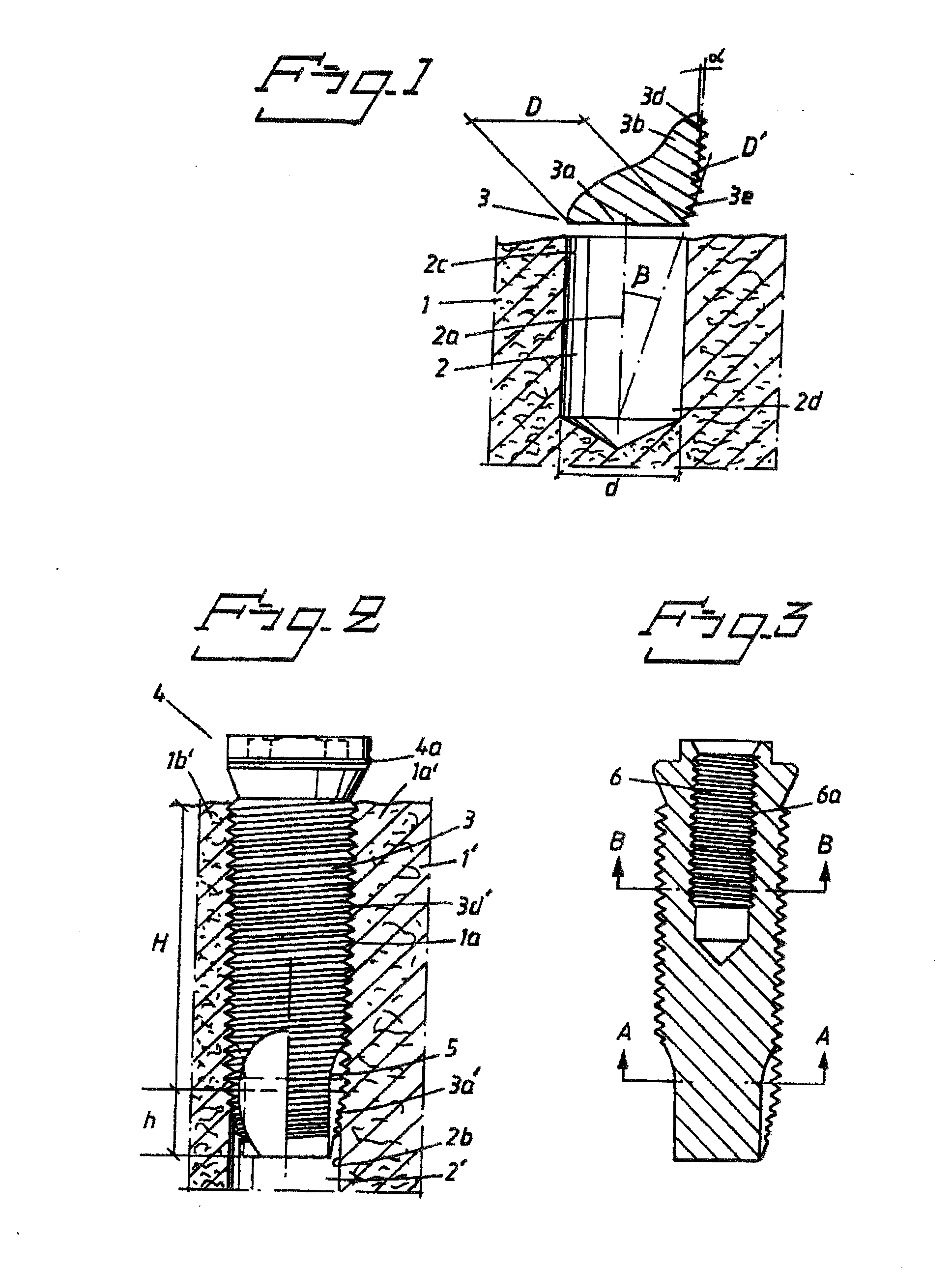Arrangement for Obtaining Reliable Anchoring of a Threaded Implant in a Bone
- Summary
- Abstract
- Description
- Claims
- Application Information
AI Technical Summary
Benefits of technology
Problems solved by technology
Method used
Image
Examples
Embodiment Construction
[0038]In FIG. 1, reference number 1 designates dentine. A circular hole 2 has been made in the dentine. The hole can be made in a manner known per se using equipment known per se. An implant with threads of, different conicities can be applied to the hole. Parts of the said implant are represented by parts of the free end 3 of the implant. The said free end has a tip part 3a which merges into a part 3b. The latter part has a thread 3d which has a slight conicity. Slight conicity is understood here as meaning conicities in which an angle of inclination α is of the order of 1° in relation to a vertical axis 2a of the hole 2 or an axis parallel to this axis. The tip 3a is provided with a thread 3e which is arranged with a conicity which gives an angle β of the order of 10°. The entry surface or entry part of the tip 3a has a diameter D′ which essentially corresponds to the diameter d of the hole or slightly exceeds the said diameter d. The hole diameter d can also be chosen as a functi...
PUM
 Login to View More
Login to View More Abstract
Description
Claims
Application Information
 Login to View More
Login to View More - R&D
- Intellectual Property
- Life Sciences
- Materials
- Tech Scout
- Unparalleled Data Quality
- Higher Quality Content
- 60% Fewer Hallucinations
Browse by: Latest US Patents, China's latest patents, Technical Efficacy Thesaurus, Application Domain, Technology Topic, Popular Technical Reports.
© 2025 PatSnap. All rights reserved.Legal|Privacy policy|Modern Slavery Act Transparency Statement|Sitemap|About US| Contact US: help@patsnap.com



